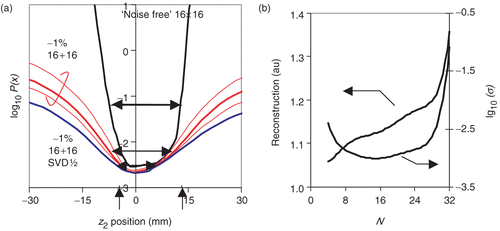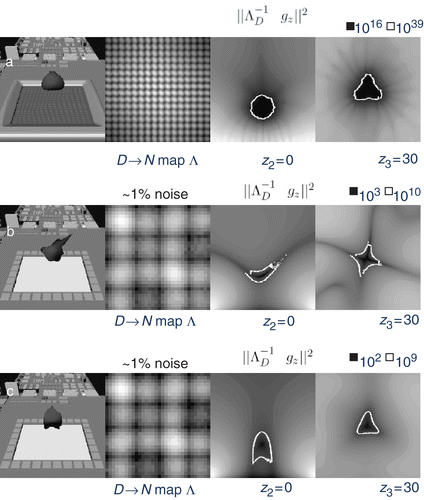Figures & data
Figure 1. (a) Schematic illustration of the measurement. (b) A test function is used to establish if points lie inside or outside the unknown domain.
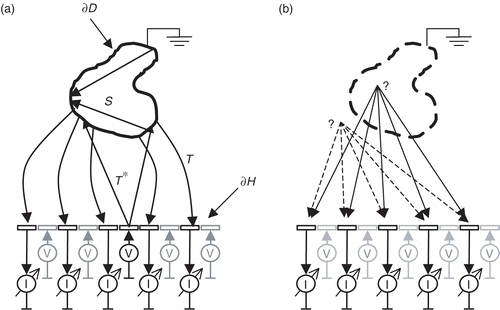
Figure 2. Illustration of the test object used for the numerical simulations. The left image illustrates the object located 30 mm above the sensor/display. The other two images give cross sections in the x2 = 0 plane and the planes, respectively.
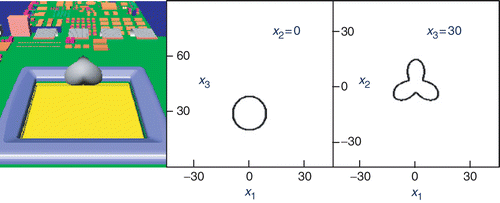
Figure 3. Reconstruction results of the test object above a test display using the factorisation method. (a) 256 sampling points in a 16×16 array, (b) 32 measurement points in a linear edge array, (c) 32 measurement points using truncated SVD regularisation (half the singular values).
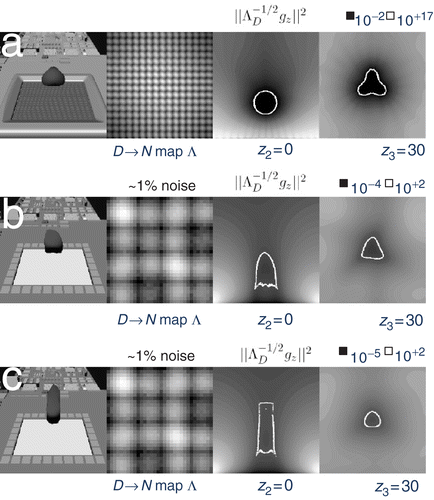
Figure 4. (a) Singular values of ΛD for the two simulated experiments. Terms of the P(z) sum for typical internal and external points. (b) for the 'noise free' 2D electrode array and (c) for 32 edge electrodes with 1% noise.

